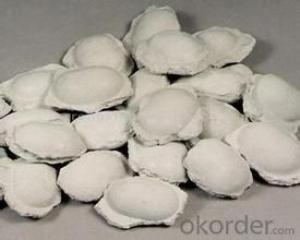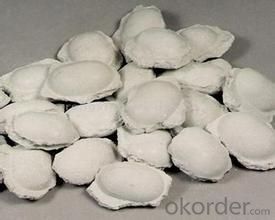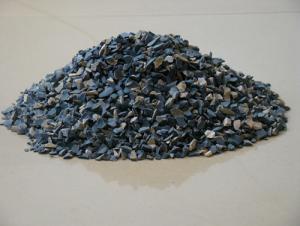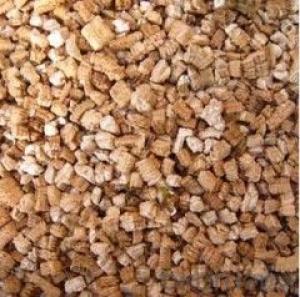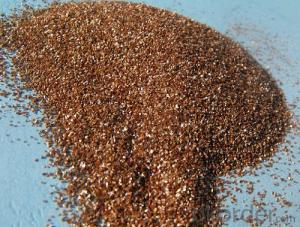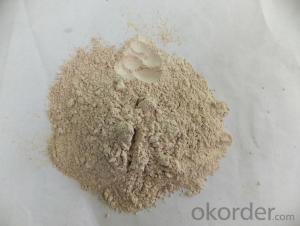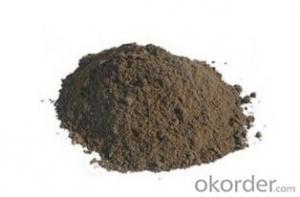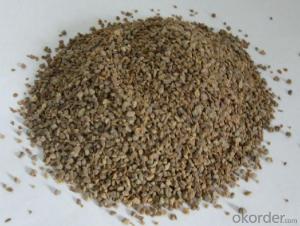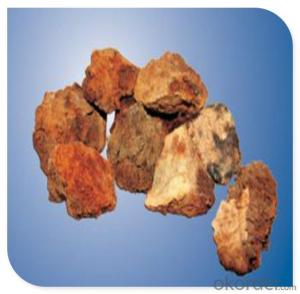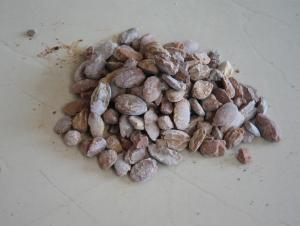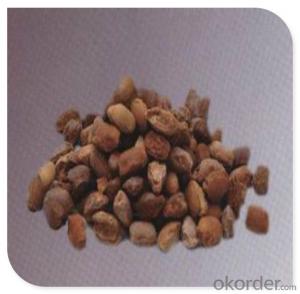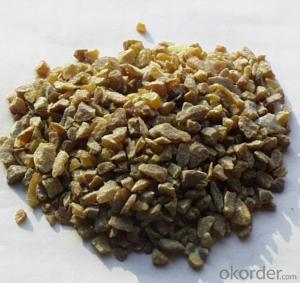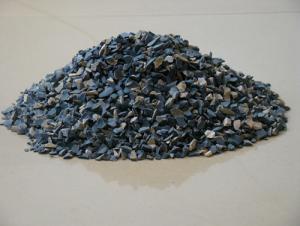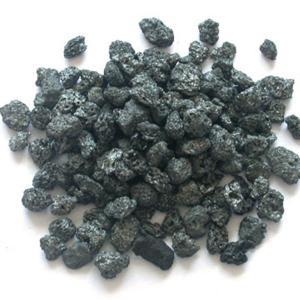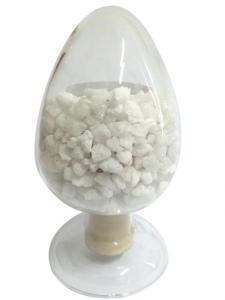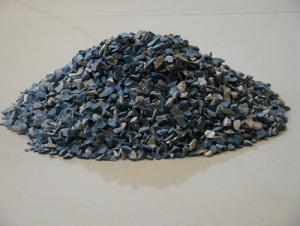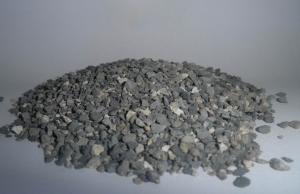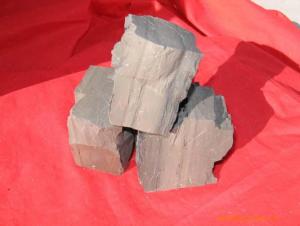Raw Materials for Refractory - Magnesite Ball (Light Burnt Magnesia Ball)
- Loading Port:
- China Main Port
- Payment Terms:
- TT OR LC
- Min Order Qty:
- -
- Supply Capability:
- -
OKorder Service Pledge
OKorder Financial Service
You Might Also Like
Packaging & Delivery
| Packaging Detail: | 1 ton Jumbo bag |
| Delivery Detail: | 15-25 days after the order |
Specifications
Light Burnt Magnesium Oxide Ball
1.Stable quality performance
2.Protect the furnace
3.Reduce consumption
4.MGO:65%
Advantage and Application
The advantage of this new material is its high MgO content as well as burned substances,which can also avoid with in furnace decomposition burning so as to save much energy. By this new means,it will do a lot good for improving the rate of scrap steel and sand melting. It is used for converter steel making,through the splashing cross to protect the furnace,which can raise the furnace life.
Because slag splashing furnace protection requires appropriate viscosity and refractoriness, reasonable slag content is the key for slag splashing furnace protection. Common slag can’t be applied to slag splashing furnace protection directly, a certain amount of caustic calcined magnesia balls need to be added to adjust, meanwhile replacing the usage of dolomite, reducing the quantity of slag, increasing MgO content in slag. Because MgO is a mineral with high melting point of 2800°C, by increasing the MgO content in slag, the viscosity of slag and refractoriness will also be increased, which will make it easier for the slag combine together with the linings and form an effective slag protection layer, thus improving the service life of linings and reducing consumption.
Magnesia Ball Specification
Test Item | Standards |
MgO | 65%±2% |
L.O.I | 20%± |
SiO2 | 6%min |
Al2O3 | 0.5%max |
Fe2O3 | 1%min |
CaO | 7%min |
H2O | 2%max |
P | 0.05%max |
Size | 40mm |
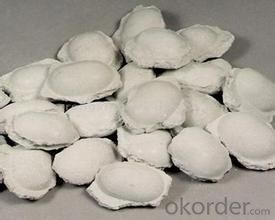
- Q: Why can aluminium hydroxide not be used to make refractory material?
- Hope my answer is helpful to you. It decomposes and produces aluminium oxide and water after heating, chemical equation for the reaction is: 2Al(OH)3=△=Al2O3+3H2O. Aluminium hydroxide can't be directly used to make refractory material because aluminium hydroxide is not stable.
- Q: What is molten silicon? What refractoriness do refractories made by it have? What properties of using does it have?
- Molten silicon can be called quartz glass, which shows an amorphous silicon state. It is a liquid fusion at above 1723 degree and is an ultra-cooling state at low temperatures. It is not generated in refractories, but generated in the matrix, showing liquid state at a high temperature capable of buffering the stress with somewhat binding properties. If quartz glass is used as refractory, its function are melrly these ones. (These are what I konw for reference only.)
- Q: Which are fire proofing thermal insulation materials?
- Grade-A fire proofing inorganic thermal insulation materials include rock wool, glass wool, vitrified micro bead, foaming cement, foaming ceramics, vacuum thermal insulation board,
- Q: What's the definition of fire endurance of the fire-resistant coating for steel structure?
- Fire endurance (h): Under the condition of standard fire resistance test, the time when the building components, accessories, or structure is subjected to fire to the time when they loose stability, integrality or thermal insulation is called fire endurance which is showed in time. Steel is the kind of building material that is nonflammable with many properties of seismic resistance and bending resistance. In practical applications, steel can improve the load capacity of buildings in a relative way, meet the needs of buildings design, beauty and mould, and it can also avoid the defects of poor flexibility and tensile strength of buliding materials like concrete. Therefore, steel is quite popular in the construction industry, and it is widely used in single-story or multi-storey skyscrapers, plants, warehouses, waiting rooms and airport terminals, etc. However, as a kind of building material, it has some unavoidable defects in fire prevention. That is its mechanical properties like yield point, tensil strength and elasticity modulus will decrease dramatically with the rise of the temperature.
- Q: What is fireproofing material? Are fireproof materials the same thing with thermal insulation materials and refractories?
- The refractory material is capable of withstanding high temperature burning, while fireproofing material is to prevent burning. They are different from each other
- Q: What's the poured refractory material?
- Frequently used poured refractory material: AZS brick, corundum brick, direct-bonded?magnesia-chrome?bricks, carborundum brick, silicon nitride bonded silicon carbide brick, nonoxide refractories like nitride, silicide, sulfide, boride and carbide, and oxide refractories like calcium oxide, chromium hemitrioxide, alumina, magnesium oxide and beryllia.
- Q: How to divided the grade of external wall thermal insulation materials?
- 1, According to China's national standard GB8624-97, combustion performance of building materials will be divided into the following grade level A: Incombustible building material: It is a kind of material that almost does not occur burning. Level B1: Nonflammable building material: Non-flame material has good flame resistance. It is difficult to fire under the condition of open fire in the air or high temperature, and it is not easy to quickly spread, and when the combustion?source is removed, the combustion will stop immediately. Level B2: Combustible?building?materials: Flame material has a good flame resistance. In case of fire in the air or at high temperature, it will immediately burst into flames, and easily lead to the spread of fire, such as wooden column, timber roof truss, timber beam and wooden stairs. Level B3: Combustible?building?materials: It has no any flame resisting effects, and is easy to burn, so the fire risk is high. 2, The external wall thermal insulation materials is divided by fire rating 1) level A combustion performance thermal insulation material Rock wool, glass wool, foam glass, foamed ceramics, foam cement, hole-closed perlite, etc. 2. combustion performance is level B1 insulation materials: Extruded polystyrene board (XPS) after special treatment / Special treatment of polyurethane (PU), phenolic aldehyde and gelatine powder polyphenyl granule 3, combustion performance is level B2 insulation material: Molded polystyrene board (EPS), extruded polystyrene board (XPS), polyurethane (PU), polyethylene (PE), etc. I hope my amswers are helpful to you
- Q: What are included in fireproofing materials?
- Incombustible?material of construction fire-proof material Grade A: Cement, stone, steel, coat, glass, aluminium alloy, ceramic tile, etc.; nonflammable material Grade B1: Fireproof?panel, rock wool.
- Q: Fire resistance and evaluation of refractory for casting
- The refractory degree of refractory material at high temperature is called refractoriness. Refractory products all contain substances from fusible sintering action, the melt crystal as unlike at a fixed temperature, but the temperature in a wide range. At a lower temperature, a small amount of melt is formed, and as the temperature increases, the amount of the melt increases, and the product gradually softens. Refractoriness and melting point (crystal) are different concepts.
- Q: Are there any differences between insulation and refractory materials ?
- Refractory materials can resist more than 1200 degrees, some of which are not insulation materials, such as firebricks, which can directly contact with heat source, has little insulation effect. Ceramic fiber, high silica, etc. are all refractory materials which can insulate. Insulation materials with poor performance usually is lower than 800 degrees, which have large thermal resistance, and low thermal conductivity, high porosity. Thus they reduce the thermal loss. To put it simply, insulation materials store most of the heat and only let a small part of heat lose through the air, thus the heat has been isolated. Glass fiber, rock wool, flexible material for thermal insulation, etc.
Send your message to us
Raw Materials for Refractory - Magnesite Ball (Light Burnt Magnesia Ball)
- Loading Port:
- China Main Port
- Payment Terms:
- TT OR LC
- Min Order Qty:
- -
- Supply Capability:
- -
OKorder Service Pledge
OKorder Financial Service
Similar products
Hot products
Hot Searches
Related keywords
